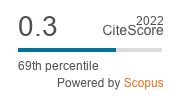- Home »
- Issues »
- 23/2 – Fall 2018 »
- Articles »
Circles of Failure, Strategies of Hope
A Girardian Perspective on the Tragic Vision
Abstract
This paper asks whether there are grounds for viewing Girard’s work as a tragic vision, and explores the criteria and contexts that might figure in such an investigation. Mimetic anthropology is built on references to the tragic perspective, but its tragic aspect is complex and diaphanous in respect of its structuring and dynamics. Its framework is difficult to explore without engaging with contemporary Christian theological thought—something that significantly affects its implications. As for the latter, the transformative potential of Girard’s tragic anthropology, directly engendered by its critical approach to its own theses, tends to shatter the stability of its assumptions. Therefore, from the earliest interpretations of ancient tragic drama, through the pitfalls of the notion of sacrifice and the dialogue with the philosophy of existence and dramatic theology, all the way to the so-called apocalyptic phase in Girard’s thought, we can observe shifting relationships between the broadening areas of human failure on the one hand, and the elusive horizon of hope on the other. Within this vision, the last strategy of hope seems to lie in the decision of the individual as a witness to a man-made apocalypse—and/or the apocalypse itself.



